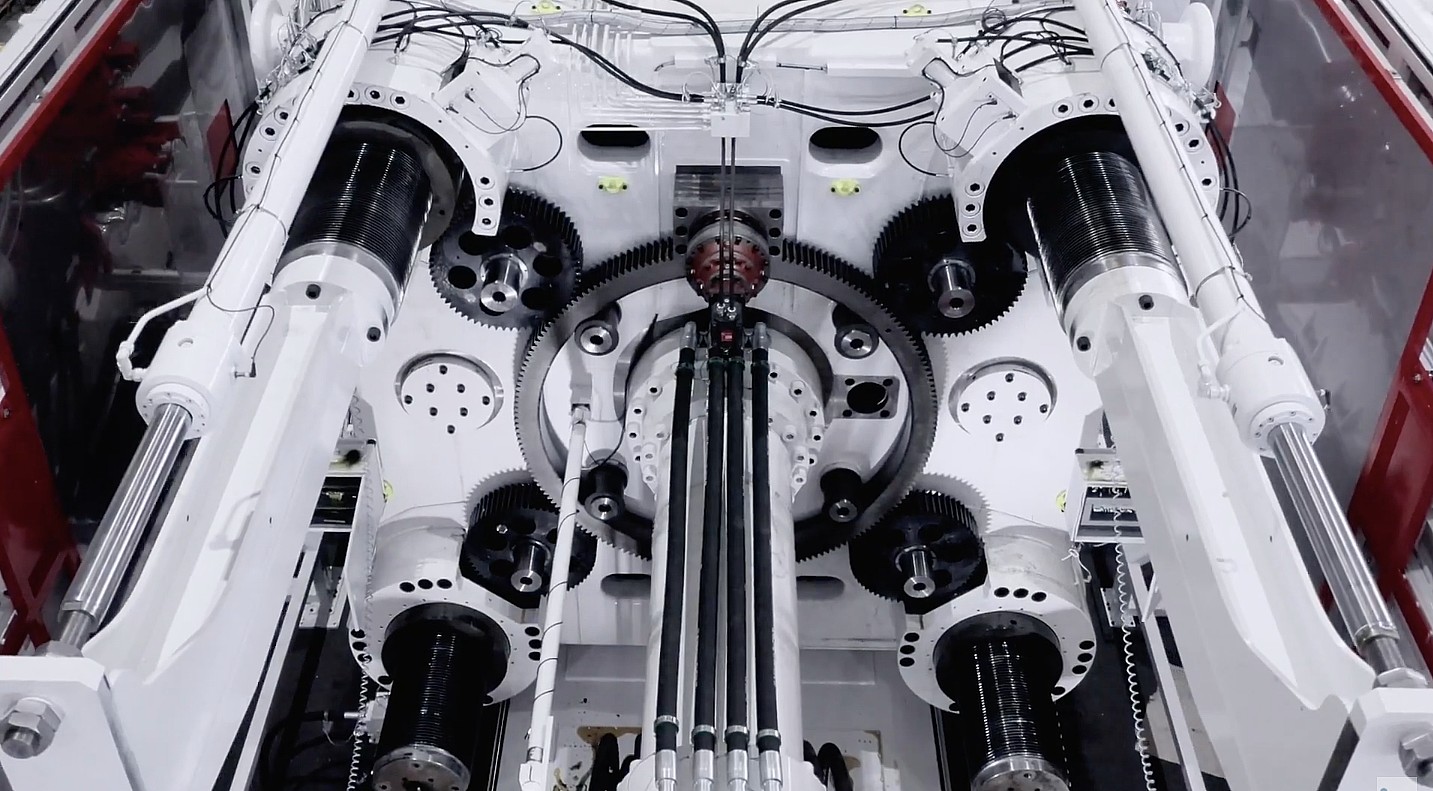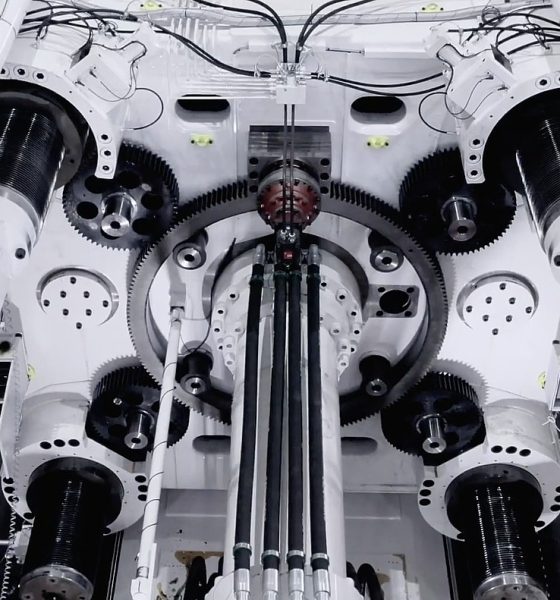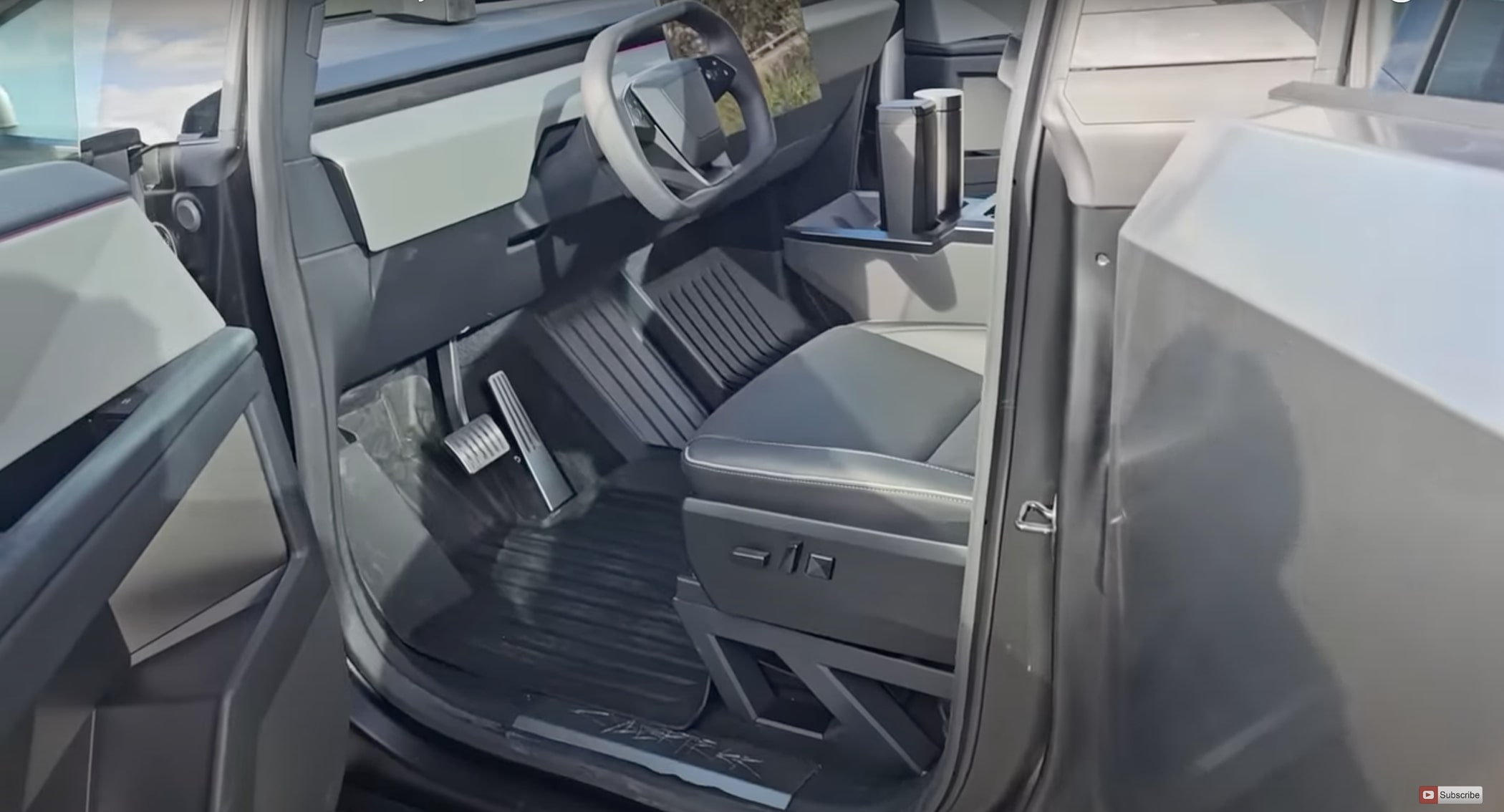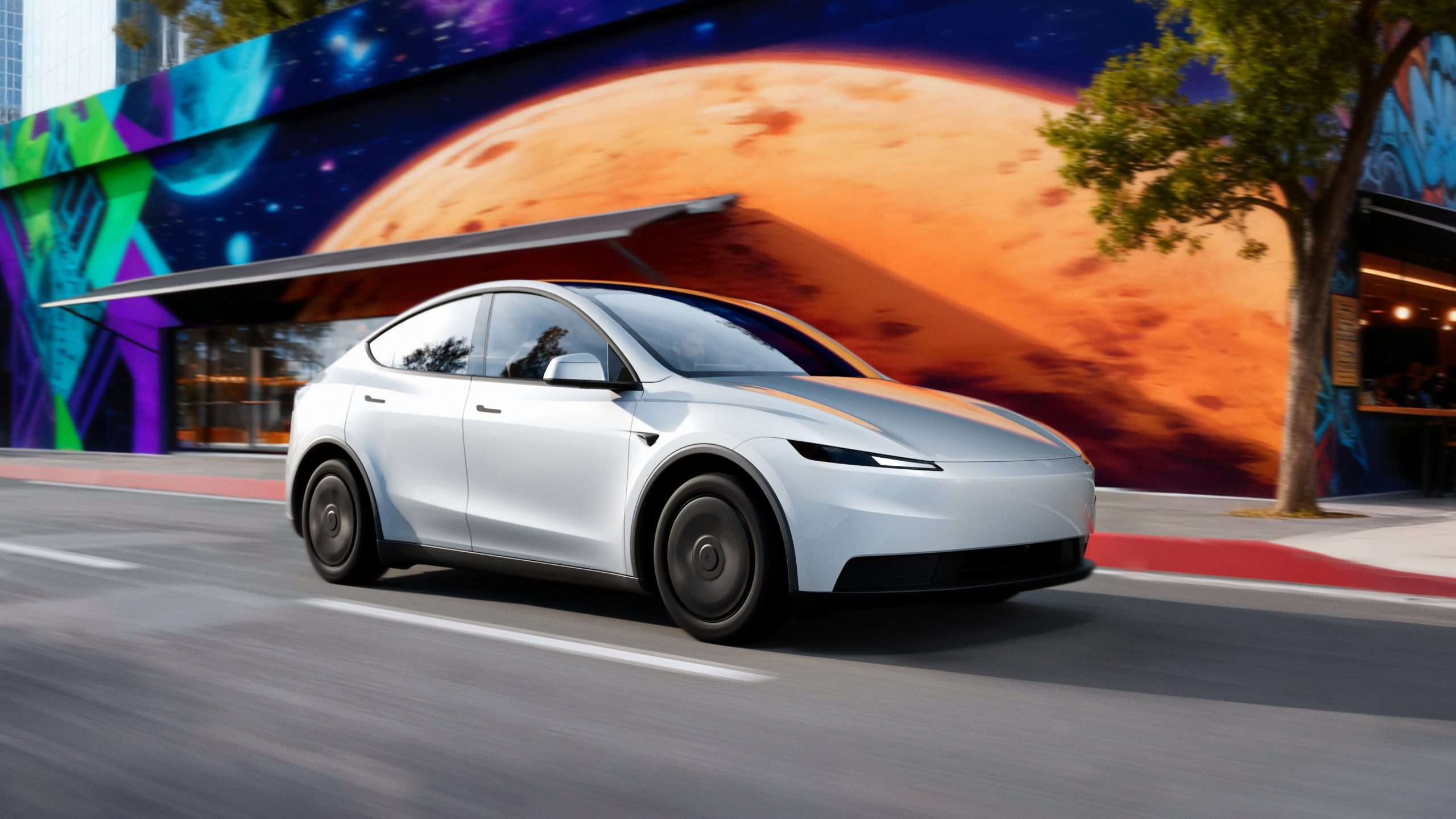

News
Tesla-style Giga Presses and Megacasts on the cards for Volkswagen’s future EV plans
With Tesla expanding its vehicle production capabilities through the deployment of facilities like Gigafactory Berlin and Giga Texas, the company’s lead in the electric vehicle sector has never been more evident. It is then unsurprising that some of Tesla’s competitors in the automotive segment are emulating some of the EV maker’s innovations to help them catch up in the electric car market.
Just last month, Volvo revealed that it would also be using Tesla-style megacasts for its next-generation electric vehicles. Volvo Solution Architect Vehicle Platform Mikael Fermer noted that the use of megacasts, which drastically reduce the number of components in a vehicle, would be the “biggest technology shift since we switched from wood to steel for car bodies.”
And now, Volkswagen also seems to be looking into the use of megacasts for its next-generation electric cars. VW is already a fairly successful electric vehicle maker among its legacy auto peers, but the company is still not quite as innovative as younger companies like Tesla. Tesla, for example, is already capable of churning out a Model Y in ten hours at Giga Berlin, but Volkswagen still takes about three times as much time to build the ID.3, a smaller electric car.
Volkswagen aims to improve its electric vehicle production process with its Trinity EV plant, a facility that’s expected to be operational in 2026. The Trinity plant is expected to improve EV production times for Volkswagen, which should be possible through the use of innovations such as large die castings and more automation. In a statement to Reuters, Volkswagen brand production chief Christian Vollmer noted that the company would achieve something big if it can produce electric cars in just ten hours.
“Our goal is clear: we want to set the standard with our production. If we can get to ten hours, we have achieved something big,” Vollmer said, adding that Volkswagen is already improving its productivity at a rate of about 5% per year.
Volkswagen is one of the world’s most experienced automakers, but it is quickly learning that building electric vehicles is a completely different ballgame. The company can already build cars like the Tiguan and Polo in 18 and 14 hours at its Germany and Spain plants, but its all-electric ID.3 still takes about 30 hours to build. Vollmer noted that improvements should be possible in the Trinity plant since the facility would allow the company to condense its operations.
However, it should be noted that Volkswagen does not plan to have Giga Presses at its new plant in Wolfsburg. Instead, the company plans to install the house-sized machines at a facility in Kassel, about 100 miles away, and simply transport the large die cast components by train.
Tesla, for its part, has noted that its efficiency in Gigafactory Berlin is due in no small part to its two Giga Presses, which apply 6,000 tonnes of pressure to make the rear underbody of the Model Y. Giga Berlin’s press shop can produce 17 components in less than six minutes for now, but with six more Giga Presses set to be deployed in the near future, the electric vehicle maker would be capable of producing its best-selling all-electric crossover even faster.
Don’t hesitate to contact us with news tips. Just send a message to simon@teslarati.com to give us a heads up.

News
Tesla adjusts crucial feature as winter weather arrives

Tesla has adjusted the functionality of a crucial climate feature as Winter weather has started to arrive throughout some parts of the United States. The new feature was highly requested by owners.
Tesla has a Cabin Overheat Protection feature that helps keep the temperature regulated if it reaches a certain threshold. Inversely, it can be used in cold weather as well, which will automatically warm the cabin if it sinks to a temperature that is too low for the owner’s comfort.
This is a great way to keep the cabin either warmed up just enough or cooled down just enough so that it never gets too hot or too cold. Extreme temperatures could damage certain parts of the vehicle or damage personal belongings that are kept inside the car.
Overheat protection is a great thing to have in hot climates like Arizona or Texas, especially with the Premium trims of the Model 3 and Model Y, which feature a glass roof.
Many owners appreciate the feature, but they argue that using it at home will utilize too much energy, especially during extreme temperatures. For a while, many Tesla fans have requested an option to disable this feature when the car is parked at home, which the company recently added, according to Not a Tesla App.
The feature is part of Software Version 2025.44.3, and the release notes state:
“You can now choose Exclude Home when Cabin Overheat Protection or No A/C is enabled.”
Tesla has been great at listening to what owners want with new features, and this is one that will reserve some charge and prevent unnecessary utilization of available power, especially as the car is parked at home. If owners want to condition the cabin or get the car ready for operation with a comfortable interior, they can utilize the Tesla app to adjust the climate.
Elon Musk
Tesla CEO Elon Musk sends rivals dire warning about Full Self-Driving

Tesla CEO Elon Musk revealed today on the social media platform X that legacy automakers, such as Ford, General Motors, and Stellantis, do not want to license the company’s Full Self-Driving suite, at least not without a long list of their own terms.
“I’ve tried to warn them and even offered to license Tesla FSD, but they don’t want it! Crazy,” Musk said on X. “When legacy auto does occasionally reach out, they tepidly discuss implementing FSD for a tiny program in 5 years with unworkable requirements for Tesla, so pointless.”
I’ve tried to warn them and even offered to license Tesla FSD, but they don’t want it! Crazy …
When legacy auto does occasionally reach out, they tepidly discuss implementing FSD for a tiny program in 5 years with unworkable requirements for Tesla, so pointless. 🤷♂️
🦕 🦕
— Elon Musk (@elonmusk) November 24, 2025
Musk made the remark in response to a note we wrote about earlier today from Melius Research, in which analyst Rob Wertheimer said, “Our point is not that Tesla is at risk, it’s that everybody else is,” in terms of autonomy and self-driving development.
Wertheimer believes there are hundreds of billions of dollars in value headed toward Tesla’s way because of its prowess with FSD.
A few years ago, Musk first remarked that Tesla was in early talks with one legacy automaker regarding licensing Full Self-Driving for its vehicles. Tesla never confirmed which company it was, but given Musk’s ongoing talks with Ford CEO Jim Farley at the time, it seemed the Detroit-based automaker was the likely suspect.
Tesla’s Elon Musk reiterates FSD licensing offer for other automakers
Ford has been perhaps the most aggressive legacy automaker in terms of its EV efforts, but it recently scaled back its electric offensive due to profitability issues and weak demand. It simply was not making enough vehicles, nor selling the volume needed to turn a profit.
Musk truly believes that many of the companies that turn their backs on FSD now will suffer in the future, especially considering the increased chance it could be a parallel to what has happened with EV efforts for many of these companies.
Unfortunately, they got started too late and are now playing catch-up with Tesla, XPeng, BYD, and the other dominating forces in EVs across the globe.
News
Tesla backtracks on strange Nav feature after numerous complaints

Tesla is backtracking on a strange adjustment it made to its in-car Navigation feature after numerous complaints from owners convinced the company to make a change.
Tesla’s in-car Navigation is catered to its vehicles, as it routes Supercharging stops and preps your vehicle for charging with preconditioning. It is also very intuitive, and features other things like weather radar and a detailed map outlining points of interest.
However, a recent change to the Navigation by Tesla did not go unnoticed, and owners were really upset about it.
For trips that required multiple Supercharger stops, Tesla decided to implement a naming change, which did not show the city or state of each charging stop. Instead, it just showed the business where the Supercharger was located, giving many owners an unwelcome surprise.
However, Tesla’s Director of Supercharging, Max de Zegher, admitted the update was a “big mistake on our end,” and made a change that rolled out within 24 hours:
The naming change should have happened at once, instead of in 2 sequential steps. That was a big miss on our end. We do listen to the community and we do course-correct fast. The accelerated fix rolled out last night. The Tesla App is updated and most in-car touchscreens should…
— Max (@MdeZegher) November 20, 2025
The lack of a name for the city where a Supercharging stop would be made caused some confusion for owners in the short term. Some drivers argued that it was more difficult to make stops at some familiar locations that were special to them. Others were not too keen on not knowing where they were going to be along their trip.
Tesla was quick to scramble to resolve this issue, and it did a great job of rolling it out in an expedited manner, as de Zegher said that most in-car touch screens would notice the fix within one day of the change being rolled out.
Additionally, there will be even more improvements in December, as Tesla plans to show the common name/amenity below the site name as well, which will give people a better idea of what to expect when they arrive at a Supercharger.








